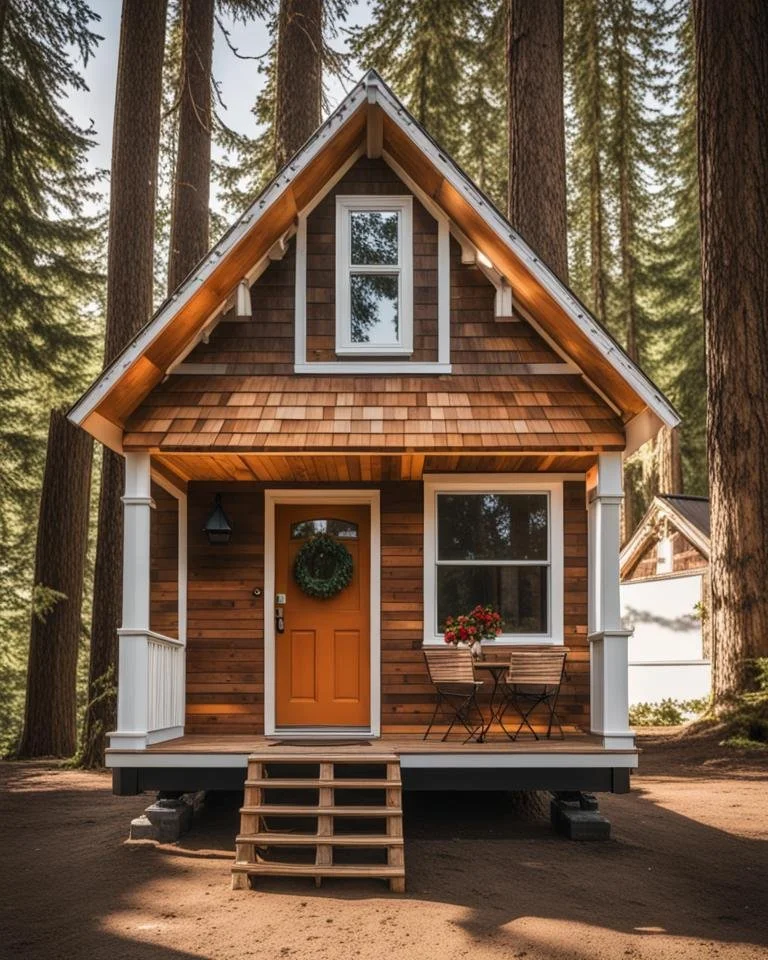Understanding Tiny Home Laws in Washington State: A Complete Guide for Future Tiny Homeowners
If you're dreaming of a life in a tiny home in Washington State, understanding local zoning laws and regulations is critical. Washington has a progressive attitude toward tiny living, but each county and city has unique rules that can impact where and how you live. This guide provides a detailed roadmap, covering everything from zoning laws and building codes to resources for navigating permits and finding suitable land.
1. Start with Local Zoning Laws
Tiny home regulations in Washington vary widely by county and city. It’s essential to check local zoning ordinances, as some areas are more accommodating to tiny homes than others. In general, areas like Spokane County, Clark County, and Seattle have more flexible rules for tiny homes on wheels (THOWs) and accessory dwelling units (ADUs).
Who to Contact:
Spokane County: Spokane County Planning Department at (509) 477-3675
Clark County: Clark County Community Planning Office at (564) 397-2280
Seattle: Seattle Department of Construction and Inspections at (206) 684-8600
Reach out to these departments to learn about any specific rules for tiny homes, including minimum square footage and land use requirements.
2. Understanding Building Codes
Washington state building codes are administered at the state level, but counties can enforce additional rules. Building codes for tiny homes can vary, depending on whether you’re placing a tiny home on a permanent foundation or a trailer (THOW). Typically:
Permanent Foundations: If your tiny home is on a foundation, it must meet the International Residential Code (IRC), which may require features like a sleeping loft or specific insulation.
Tiny Homes on Wheels: These are often treated similarly to RVs. If you plan to live in a THOW full-time, you may need to seek an RV certification, which meets safety standards but avoids some residential code restrictions.
Helpful Contacts:
Washington State Building Code Council: They can provide information on state requirements and direct you to regional building officials. Contact them at (360) 407-9277.
3. Getting Permits and Approvals
For a legal tiny home setup, securing the right permits is crucial. You may need:
Building Permit: Required for tiny homes on foundations.
Zoning Permit: Ensures your tiny home adheres to local land-use restrictions.
RV Certification: For THOWs intended as permanent residences, this certification can simplify legal acceptance in certain areas.
Local Offices for Permits:
King County Department of Permitting and Environmental Review: (206) 296-6600
Pierce County Planning and Public Works: (253) 798-3739
Call the relevant office early in your planning process to get a clear list of required permits. This can save you time and help avoid legal complications later.
4. Tiny Home Parking and Placement
One of the biggest challenges for tiny home owners in Washington is finding a legal place to park or place their home. Here are some options:
RV Parks: Many RV parks accept THOWs, though some restrict long-term stays. Contact local RV parks directly to confirm if they allow tiny homes.
Backyard ADUs: In cities like Seattle, where ADUs are legal in many residential areas, you can potentially live in a backyard tiny home if it meets ADU requirements.
Tiny Home Communities: Tiny Tranquility in Washington offers tiny home lots with community amenities. This is a good option if you're looking for a supportive tiny home community with a legal setup.
Additional Resource:
Washington Tiny House Association: A great resource for legal guidance and community support. They offer information on legal locations for tiny homes in Washington. Visit their website for more details.
5. Utilities and Off-Grid Considerations
If you’re planning to go off-grid, Washington’s mild climate can make solar power a viable option. For water and sewage, consider rainwater harvesting systems and composting toilets, but be sure these comply with local health department regulations.
Off-Grid Utility Providers:
Blue Sky Solar Systems in Olympia specializes in solar setups for tiny homes in Washington. Contact them at (360) 956-9177.
For composting toilets, consult with the Washington State Department of Health to ensure compliance.
6. Consulting Tiny Home Builders
Working with a reputable tiny home builder is essential for ensuring your home is code-compliant and suitable for the Washington climate. Nomadic Structures Tiny Homes offers custom-built tiny homes tailored to local codes and the Pacific Northwest lifestyle. Whether you’re planning a tiny home on wheels or a permanent foundation, Nomadic Structures can guide you through the design and building process with expertise in zoning and permit requirements.
Contact Nomadic Structures: Visit our contact page for assistance with your tiny home needs. With experience in Washington’s regulations, we can help you design a home that’s beautiful, functional, and legal.
7. Final Tips for Tiny Living in Washington
Join Local Tiny Home Groups: Connecting with local tiny home communities can provide valuable insights and updates on regulations, as they are often subject to change. Look for groups on social media or attend local tiny home events.
Stay Updated on Laws: Tiny home regulations in Washington are evolving, and some areas are becoming more tiny home-friendly. Keep in touch with county planning departments for any changes that could benefit tiny home living.
Consider Rural Areas: Counties like Whatcom and Jefferson are often more flexible with tiny homes on rural land.
Conclusion
Navigating the tiny home laws in Washington State requires time, research, and planning, but the journey is worth it. Whether you’re placing your home on a foundation or opting for a THOW, understanding zoning laws, building codes, and permit requirements will ensure you can enjoy a legally compliant, comfortable tiny home lifestyle. Connect with local planning offices, consult with reputable builders like Nomadic Structures, and engage with the tiny home community to make your transition as smooth as possible.
Washington is a beautiful place to go tiny, and with the right steps, you can turn your tiny living dream into a reality.


